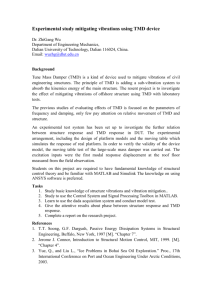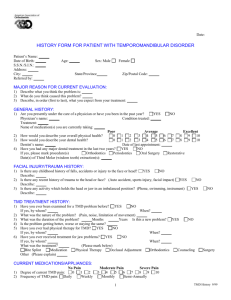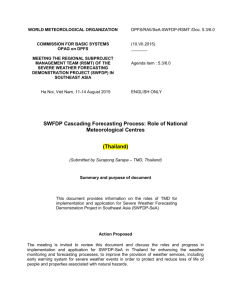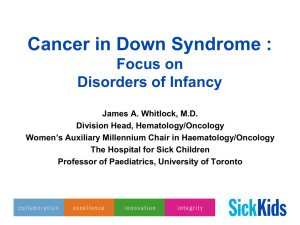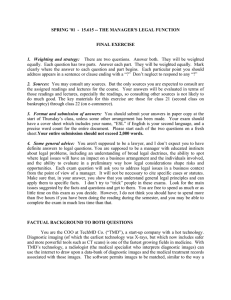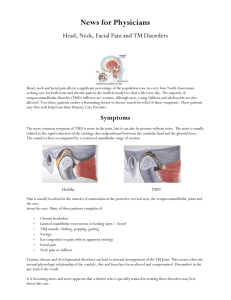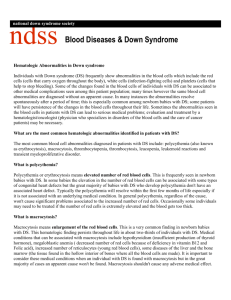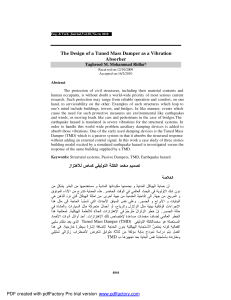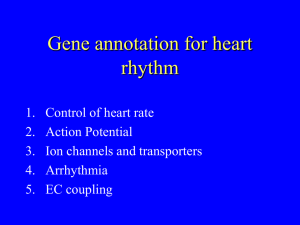Slide 1
advertisement
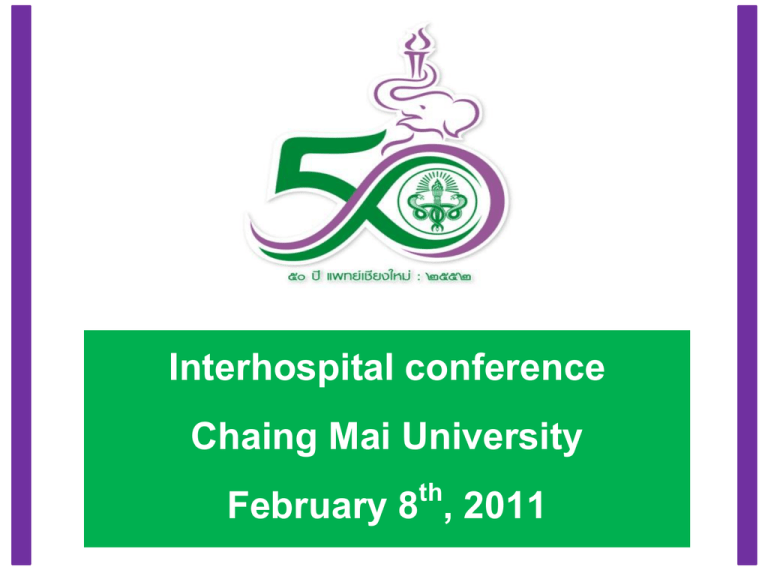
Interhospital conference Chaing Mai University th February 8 , 2011 Identification data • ผูป้ ่ วยทารกเพศหญิง ลูกครึ่งไทย-อังกฤษ อายุ 5 วัน ภูมิลาเนา จ.เชียงใหม่ Chief complaint • ผูป้ ่ วยมีผนื่ ที่หน้ าและตัว 3 วันก่อนมาโรงพยาบาล Present illness • ประวัติมารดา มารดาอายุ 30 ปี G2P1021 GA 37+6 weeks Blood group A Rh+ve antiHIV neg HBsAg neg ช่วงตัง้ ครรภ์มารดาแข็งแรงดี ไม่มีไข้ออกผืน่ ไม่มี ภาวะแทรกซ้อนอื่นๆ ระหว่างตัง้ ครรภ์ มารดา คลอด normal delivery Present illness • ประวัติผป้ ู ่ วย แรกเกิดน้าหนัก 2,555 g Apgar 9, 10 หลังเกิด ดูดนมแม่ได้ดี เริ่มมีผนื่ แดงที่เปลือกตาตัง้ แต่ วันที่ 2 หลังเกิด ต่อมากลายเป็ นแผลถลอก และ เป็ นผืน่ แดงขึน้ ตามหน้ า ลาตัว ตอนที่เริ่มมีผนื่ ไม่ มีไข้และยังดูดนมได้ดี Present illness • อายุ 3 วัน มีอาการตัวเหลือง on phototherapy (bilibed) 1 วัน microbilirubin (MB) ก่อน discharge 13.3 mg/dL (อายุ 86 ชัวโมง) ่ หลัง discharge ยังดูดนมแม่ได้ดี ถ่ายเหลือง ผืน่ เท่า เดิม • วันนี้ (อายุ 5 วัน) นัดมาติดตามเรื่องตัวเหลือง ตรวจพบผืน่ มากขึน้ ผูป้ ่ วยมีไข้ตา่ ๆ แต่ยงั ดูด นมได้ดี Family history • มีพี่ชายต่างบิดา 1 คน อายุ 8 ปี สุขภาพแข็งแรงดี • ปฏิเสธคนในครอบครัวมีผนื่ เหมือนกับผูป้ ่ วย • ประวัติมะเร็งและโรคเลือดในครอบครัว Physical examination • GA: a female neonate, active, jaundice zone 3, BW 2,550 g • V/S: PR 140/min, T 36.7 °C, RR 52/min, BP 75/55 mmHg • Skin: generalized erythematous papules and some pustules, spare both palms and soles, erythematous plaque with abrasion and crust on top on lower eye lids and cheeks both sides Physical examination • HEENT: no pale conjunctivae, icteric sclera, no conjunctivitis, no discharge per both eyes, tympanic membrane intact both sides, pharynx no injection • Lymph nodes: cervical, supraclavicular, axillary and inguinal lymph nodes were not palpable Physical examination • Heart: regular rhythm, normal S1 and S2, no murmur • Lungs: clear and equal, no adventitious sound • Abdomen: liver 2 cm below right costal margin, liver span 6 cm, spleen just palpable, soft, no mass • Genitalia and anus: normal appearance Physical examination Problem list 1. Differential diagnosis 1. 1 2 3 4 5 6 7 8 9 Complete blood count • Hb 15 g/dL, Hct 45%, • WBC 60,320 cells/mm3, neutrophil 29%, lymphocyte 23%, blast 44%, • platelet 105,700/mm3 Peripheral blood smear Peripheral blood smear Bone marrow aspiration Bone marrow aspiration Bone marrow aspiration Bone marrow aspiration • Flow cytometry: slightly positive CD34 and CD41 Discharge exam (lesion on face) • Gram stain: no organism • Discharge culture: - Rare Viridan Streptococci - Rare Coagulase-negative Staphylococci Discharge exam (lesion on face) • Wright stain: Thyroid function test • TSH 19 mIU/L (3.2-43.6), FT4 1.3 ng/dL (2-4.9) (day2) • Repeat TSH 26.44 mIU/L (1.7-9.1), FT4 1.34 ng/dL (0.9-2.6) (day 11) Liver function test • Total protein 4.7 g/dL, Albumin 2.8 g/dL, Globulin 1.9 g/dL, Cholesterol 125 mg/dL AST 48 U/L, ALT 3 U/L, Alk Phos 122 U/L, TB 16.1 mg/dL, DB 0.6 mg/dL Chemistry • Creatinine 0.55 mg/dL, • Na 140 mmol/L, K 4.7 mmol/L, Cl 108 mmol/L, HCO3 20 mmol/L • Ca 9.7 mg/dL, P 2.5 mg/dL, Uric acid 4.2 mg/dL Chest radiograph: • The heart size is enlarged. The mediastinal contour is normal. No significant infiltration in the lungs. The bony thorax is intact. The visualized bowel gas pattern is normal. Echocardiography • (6/9/2010) moderate VSD 4X5 mm in size, bidirectional shunt PG 5 mmHg, pericardial effusion 6 mm • (15/9/2010) moderate to large VSD 5X6 mm, left to right shunt PG 15 mmHg, moderate to large amount of clear pericardial effusion 5 mm, LV free wall in diastolic phase pericardial effusion posterior wall of LV apex 1.5 cm Final diagnosis • Chromosome study: 46, XX, der(21;21), +21 • Down syndrome with transient myeloproliferative disorder (TMD) Progression • Wait and observe • Plalelet transfusion 1 time • Skin lesion was gradually improved by - Oral Cephalexin - Wound dressing Date 21/9 24/9 25/9 1/10 6/10 28/10 Hb (g/dL) 11.7 13.2 10.5 13.4 9.6 9.7 Hct (%) 36.5 40.0 31.6 43.1 28.6 28.8 WBC (/mm3) 33,600 33,200 22,100 20,600 11,700 7,000 Neut (%) 18 14.3 29 11.7 30 20.5 Blast (%) 56 present 43 present 28 absent Plt (/mm3) 81,000 120,000 209,000 124,000 116,000 83,000 Skin involvement in congenital leukemia • Found 80% of congenital leukemia • Skin nodule called “leukemia cutis” • 67% are classified in FAB M4/M5 Sung TJ, Lee DH, Kim SK, et al. J Korean Med Sci. 2010: 945-9. Skin involvement in TMD • Total of 16 patients with trisomy 21 accompanied by skin lesions have been reported to date • The face was the most common site of skin lesions Uhara H, Shiohara M, Baba A, et al. J Am Acad Dermatol. 2009:869-871. Skin involvement in TMD •The skin lesions diminished spontaneously in all reported cases (median 1 month) • A cytological smear preparation is required Uhara H, Shiohara M, Baba A, et al. J Am Acad Dermatol. 2009:869-871. Transient myeloproliferative disorder (TMD) • A disease in which immature megakaryoblasts accumulate in liver, bone marrow, and peripheral blood • Found 10% of infant with Down syndrome • Spontaneous remission in most cases Gurbuxani S, Vyas P, Crispino JD. Blood. 2004: 399-406. Clinical maifestations of TMD • Elevated white blood cell with hepatomegaly • Hydrops fetalis • Jaundice • Bleeding diathesis • Respiratory distress with ascites • Pleural effusion • Signs of heart failure • Skin infiltrates Malinge S, Izraeli S, Crispino JD . Blood. 2009:2619-28. Transient myeloproliferative disorder (TMD) • 30% of DS infants with TMD develop acute megakaryoblastic leukemia (AMKL) within 3 years • Presence of trisomy 21 and GATA1 mutations is adequate for the excessive proliferation of megakaryoblasts seen in TMD Gurbuxani S, Vyas P, Crispino JD. Blood. 2004: 399-406. GATA-1 • GATA1 normally promotes the development of megakaryocytes, erythroid cells, mast cells, and eosinophils • GATA1 mutation providing a block in megakaryocytic differentiation → AMKL • Spontaneous regression of TMD could then be explained by the loss of a permissive fetal hematopoietic environment Gurbuxani S, Vyas P, Crispino JD. Blood. 2004: 399-406. Poor prognostic parameters of TMD Parameters Clinical: prematurity, ascites, bleeding Laboratory: • WBC > 100,000/mm3, • Severe coagulopathy, • Progressive liver failure, • No complete remission by 3 months Malinge S, Izraeli S, Crispino JD . Blood. 2009:2619-28. Treatment of TMD • Observation in most cases • In cases with poor prognostic parameters, lowdose cytarabine (Ara-C 1 mg/kg/day for 7 days) may be beneficial Klusmann JH, Creutzig U, Zimmermann M, et al. Blood. 2008:2991-8.
